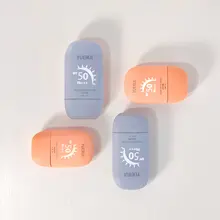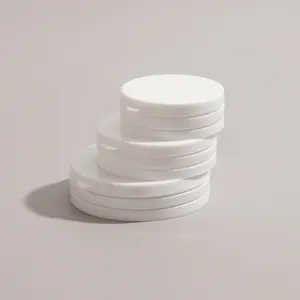A plastic bottle cap is more than just a sealing mechanism; it is an essential component in preserving product integrity, enhancing user convenience, and ensuring safety. These caps are tailored to meet the specific needs of various industries, from securing carbonated drinks to providing tamper-evidence for pharmaceuticals. The plastic bottle cap has become a symbol of reliability in packaging, embodying both function and design.
Types and Characteristics of Plastic Bottle Caps
The world of plastic caps is diverse, encompassing a range of designs each tailored to specific container needs. Screw caps, with their simple yet effective threading mechanism, are widely used for their airtight seal. Flip-top caps offer the convenience of easy dispensing, ideal for condiments and personal care products. Sports caps provide a spill-proof solution for on-the-go hydration, while disc-top caps are perfect for products that require controlled dispensing, such as lotions or gels. Each cap type is a result of careful consideration of the product's viscosity, usage context, and consumer handling, ensuring that the cap not only fits the bottle but also complements the product's overall functionality and design.
Structure and Operation of Plastic Bottle Caps
The intricate structure of a plastic bottle with cap is a marvel of modern packaging design. Beyond the visible shell and inner lining, some caps feature built-in droppers for precise dosage, others have brush applicators for products like nail polish or glue. The operation of these caps is a study in user-centric design; for example, child-resistant caps require a push-and-turn motion to open, a simple task for adults but a safeguard against accidental opening by children. The interplay of these components ensures that each cap not only seals but also enhances the user's experience with the product.
Materials and Properties of Plastic Bottle Caps
The selection of materials for plastic bottle caps is a careful balance of functionality and sustainability. Polypropylene (PP) is favored for its fatigue resistance, making it ideal for caps that are frequently opened and closed. HDPE (High-Density Polyethylene) is chosen for its strength and chemical resistance, which is crucial for storing cleaning products or industrial chemicals. These materials are not only chosen for their physical and chemical properties but also for their environmental footprint, as they are among the most recyclable plastics, contributing to a circular economy in the packaging industry.
Business Usages and Applications of Plastic Bottle Caps
In the realm of business, the applications of plastic bottle caps are as varied as the industries they serve. In the food and beverage sector, they maintain the freshness of perishables and prevent spoilage. In the automotive industry, durable caps are used for fluids that require a robust seal against harsh conditions. The pharmaceutical industry relies on caps that not only seal but also provide child resistance and sometimes even dosage control. These caps are not just closures; they are integral components that add value to the product and can be the deciding factor in a consumer's purchase decision.
Functions and Tasks of Plastic Bottle Caps
The functions of plastic cap bottles extend into the realms of safety, usability, and even marketing. Vented caps, for example, allow gases to escape, preventing deformation of the container, while still keeping liquids contained. Some caps are designed to change color if the product has been exposed to certain conditions, such as excessive heat, which could compromise product quality. These functional tasks are critical in industries where product integrity is paramount, and the cap's role is as important as the container itself.
Features and Unique Selling Points of Plastic Bottle Caps
The features of plastic bottles and caps can be subtle yet impactful. For instance, caps with a matte finish provide a premium tactile experience, while those with a glossy finish may convey a sense of cleanliness and purity. Some caps are designed with a focus on ease of recycling, featuring materials that can be easily separated and processed. These unique selling points are often a reflection of a brand's values and can influence consumer perception and choice, making the cap a key element in product differentiation.
Benefits and Positive Outcomes of Plastic Bottle Caps
The use of plastic bottles with lids brings numerous benefits to consumers and businesses alike. They extend the life of products by providing a hermetic seal that protects against environmental factors. For consumers, this means products last longer and remain fresh, reducing waste. For businesses, it translates to reduced returns and increased customer satisfaction. The environmental benefit of plastic bottle cap recycling also cannot be overstated, as it reduces the need for virgin plastic production and the associated environmental costs.
How to Use and Maintain Plastic Bottle Caps
Effective use of plastic bottle tops involves more than just opening and closing. It's about understanding the cap's features, such as how to properly engage a child-resistant mechanism or how to use a tamper-evident seal. Maintenance is equally important; for example, caps with intricate dispensing mechanisms may require regular cleaning to prevent clogging. Proper use and maintenance ensure the longevity of the cap's function and, by extension, the product it seals.
How do plastic bottle caps contribute to product safety?
Plastic bottle tops are the first line of defense in product safety, creating an impermeable barrier between the product and potential contaminants. The design of plastic bottles and lids often incorporates features that provide visual or tactile indicators if the product has been tampered with, giving consumers peace of mind about the safety of the product they are purchasing.
What are the environmental impacts of plastic bottle cap production?
The environmental impact of plastic bottle caps is a concern that the industry takes seriously. Efforts to reduce this impact include optimizing manufacturing processes to reduce waste, using recycled materials, and designing caps that are easier to recycle. Plastic cap manufacturing is becoming increasingly sustainable, reflecting a commitment to environmental stewardship.
How can businesses ensure the compatibility of plastic bottle caps with their products?
Ensuring compatibility of plastic bottle caps with products is a multifaceted process. It involves assessing the cap's material compatibility with the product, ensuring the dimensions match the bottle's neck, and that the cap's features support the product's use. For example, a cap for a small plastic bottle with lids may need to be easy to open for consumer convenience, while a cap for a 16 ounce plastic bottle may need to be more robust to support larger volumes. Close collaboration with cap manufacturers is essential to tailor the cap to the product's specific needs.







































 浙公网安备 33010002000092号
浙公网安备 33010002000092号 浙B2-20120091-4
浙B2-20120091-4